Another day, another masterpiece for Meena the painting elephant. One day she’ll be a giant, but for now the four-year-old’s forehead comes just above that of her mahout, or handler, who guides her, paintbrush-in-trunk, to daub bright colours on paper. Meena is the star of the show at Maetaman Elephant Camp near Chiang Mai in northern Thailand, a popular draw for tourists from across the world.
When the show is over, Meena is led back to her concrete holding pen, where she is tethered day and night by a half-metre long spiked chain around one ankle. She tries to avoid putting this foot down – whenever it touches the ground, the spikes bite into her flesh. Her mahout explains away her discomfort, saying she wears the spiked chain because she likes to kick.
Meena’s story was recently published in National Geographic, part of a year-long global investigation which lifted the lid on sites around the world where animals are the main attractions. Some of the most heart-wrenching scenes were shot at Maetaman.
Wildlife tourism is a billion-dollar industry which makes up around a third of all global tourism, according to data by Oxford University’s Wildlife Conservation and Research Unit (WildCRU) compiled for international non-profit World Animal Protection (WAP).
Meena is not alone. Across Asia, tens of thousands of elephants like her are kept under lock and key in similar “camps”, 77% of them in severely inadequate conditions according to WAP. Many elephants languish in Thailand, which is “home to about three quarters of all elephants kept in captivity for entertainment in Asia,” WAP advisor Jan Schmidt-Burbach wrote in Southeast Asia Globe in 2017.
Elephants are big business in Thailand, where countless camps welcome an estimated 10 million tourists through their doors every year. Camps like Maetaman, one of Thailand’s oldest and largest, can receive over 1,000 visitors a day, all hungry for elephant rides, shows and selfies.
Animal law specialist Delcianna Winders has worked as the PETA Foundation’s deputy general counsel of the for close to a decade. For her, no elephant would naturally carry people or be induced to perform tricks.
“Elephants, even when born in captivity, are wild animals and they do not perform tricks or allow humans to climb on their backs or necks because they want to,” she said. “They do so only because they have been violently trained to fear the consequences if they do not submit.”
Elephants forced to perform tricks in Thailand. Photo: World Animal Protection
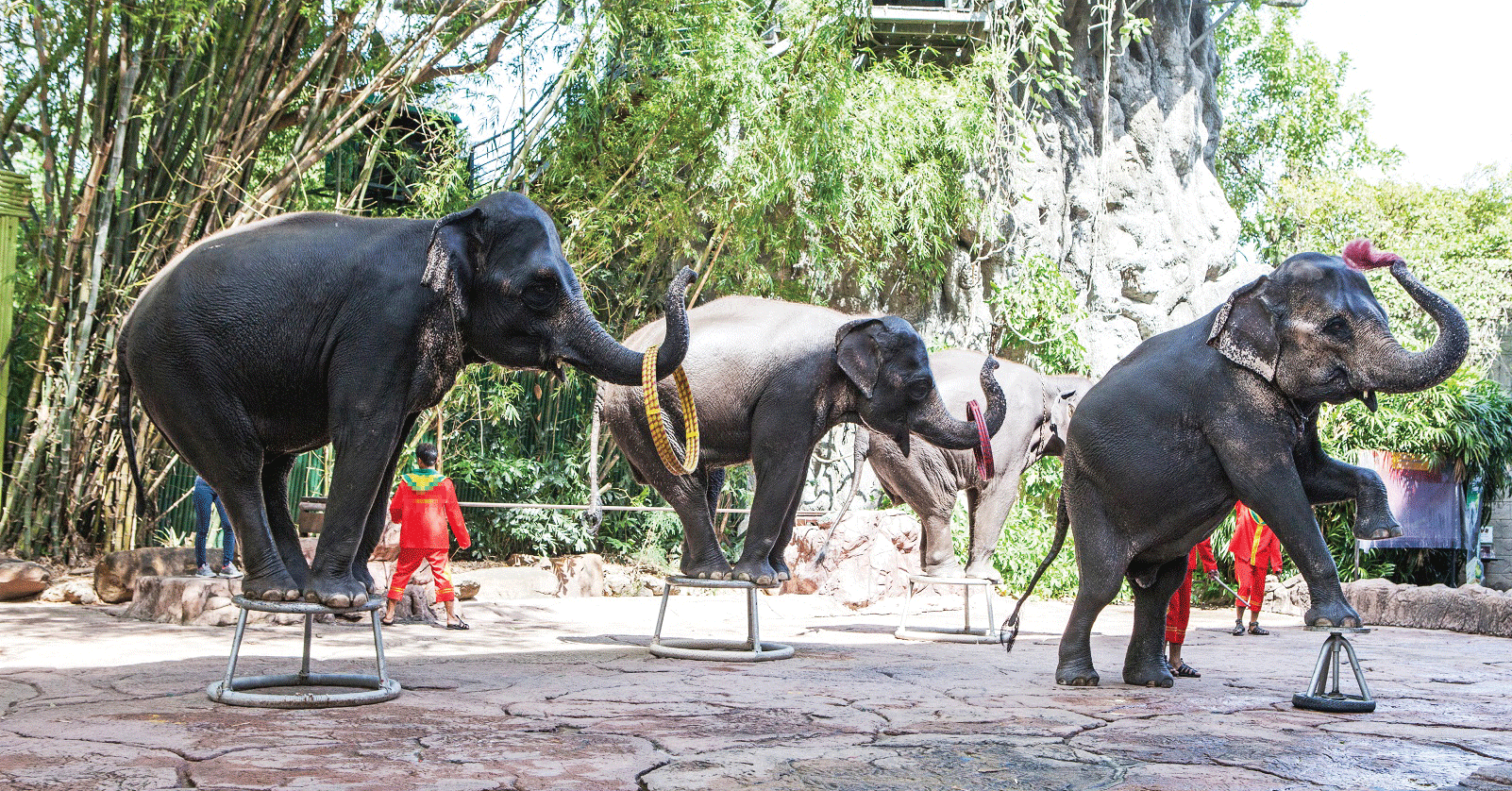
But it wasn’t always like this. Elephants were once the driving force behind another key industry in the region: logging. The forest giants were used as “nature’s four-wheel drive”, to heave ton-weight logs out of the vast mountainous forests, razing their own homes to the ground in the process. Their chains were looser then. When the day’s work was done, they walked freely in the forest.
If you ask some people, Meena’s generation is luckier. According to Wassana Chailert Thongsuk, managing director of the similarly named Maetaeng Elephant Park, also in Chiang Mai, Meena’s ancestors would have endured far worse as a timber elephant yoked to the log.
“Back in the days when elephants were still logging,” she told Thai media MGR Online “they had to work hard, they got thin… Today, the majority of elephants working in the tourism industry have better living and working conditions.”
The truth is more complicated. Life for the elephants in logging camps was part drudgery and part freedom – by day they were beasts of burden, but by night were left to their own devices in the forest foraging and socialising with other elephants.
“The elephants and their owners are so attached to one another. It’s heartbreaking if they have to sell their elephants … it’s like selling your own daughters and sons to someone else”
Tint Lwin Thaung, director of charitable environmental organisation Nature Conservancy’s Myanmar programme
Logging by elephant was possible only with the help of mahouts. Hailing from a handful of hill tribes, including the Karen and Kui, mahouts revered elephants and were renowned for their prowess in capturing and “taming” the giants from the jungle, as they had done for millenia. In the 16th century in what is now Thailand, mahouts were called upon by the old Kingdom of Ayutthaya to supply elephants for ceremonies – and for battle.
These elephant keepers, known as oozies or “head riders” in Myanmar after their forward riding position, lived alongside their elephants, and considered them family. They knew their steeds intimately and tended to their every need.
“Every morning, the oozie is responsible for checking their health condition and for feeding them,” explained Win Aung, the Myanmar-based advisory board member for US-based charitable organisation the Elephant Project. Feeding was the easy part – a walk in the forest where elephants could browse the canopy, eating up to 250kg, around 7% of their own weight in leaves, bark and shoots every day.
In Thailand, all this came to an end in 1989. Following a spate of devastating floods and landslides in deforested areas, the government introduced a total ban on commercial timber production, one of the first countries in the world to do so. This left an estimated 2,000 elephants out of work – along with their mahouts.
Unable to put food on the table, many mahouts left their homes on the hillside and travelled to the big cities to beg and entertain tourists. But this was short-lived: city authorities found elephants roaming the streets disruptive – if not downright dangerous – and begging was soon banned.
Out of options, many mahouts had to sell their elephants to the tourist camps springing up around Thailand. The buyers were businessmen with the funds to feed and water the elephants, who were put on display in tourist hotspots such as the resort island of Phuket.
The camps were a hit with tourists ,and elephant riding was soon high on the agenda of visitors to the so-called land of smiles. Money and elephants quickly changed hands.
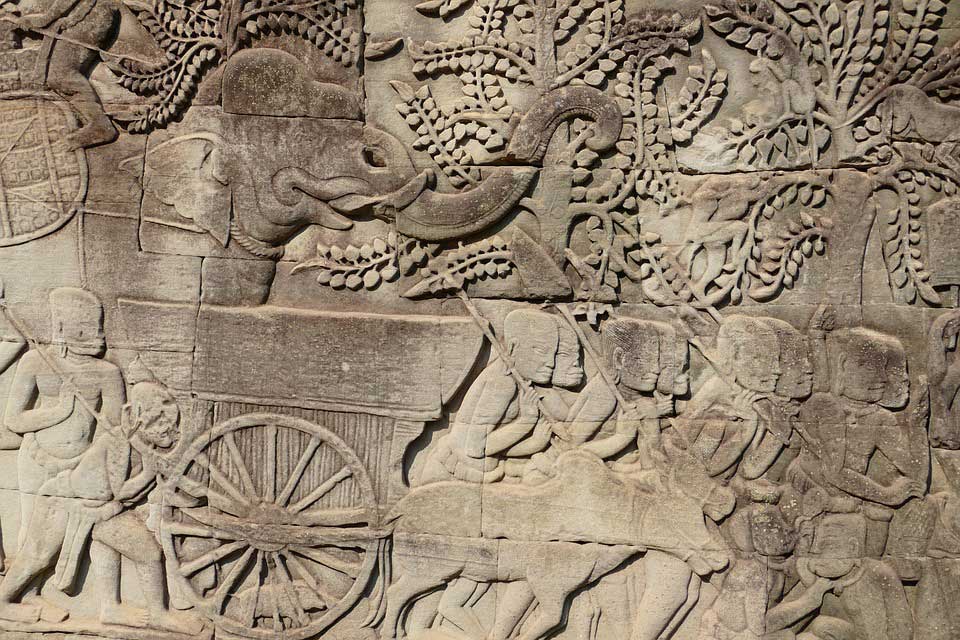
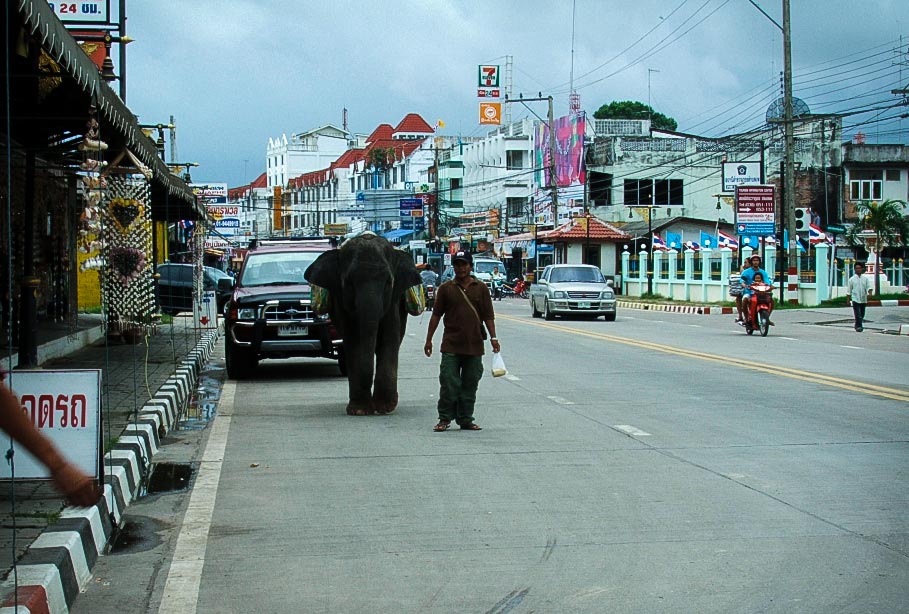
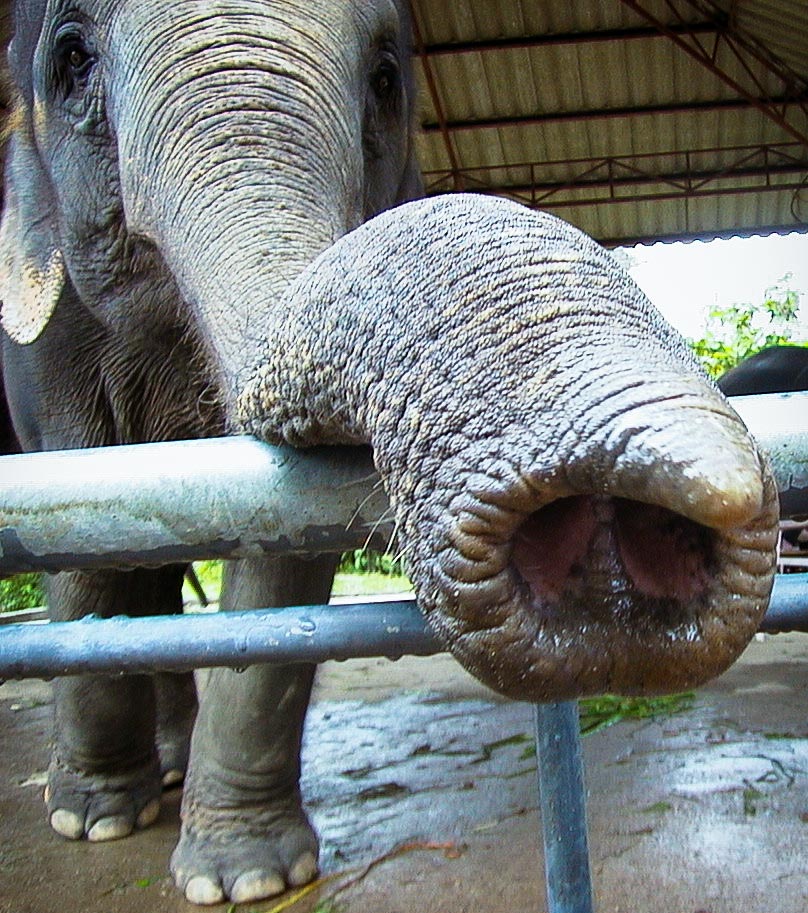
But their mahouts weren’t always part of the bargain, according to Daniel Turner, associate director for tourism at the Born Free Foundation. Instead, he said, camp owners preferred to take on “migrants from Myanmar and other countries, and also younger people in Thailand,” – some of whom had never laid eyes on an elephant before. Without experienced elephant handlers to set the rules, abuse was rife.
Now history is repeating. In 2015, more than 25 years after Thailand’s logging ban, neighbouring Myanmar introduced its own ban to prevent catastrophic deforestation. Of the 2,000 elephants working in the forest for state-owned Myanmar Timber Enterprise (MTE), nine out of ten became jobless overnight – along with their oozies.
While oozies within striking distance of Myanmar’s mines could put their elephants to work hauling precious stones instead of logs, many more were forced to sell their elephants – to Thailand.
This was a terrible price to pay for the oozies, who had raised their elephants as their own. Tint Lwin Thaung, director of charitable environmental organisation Nature Conservancy’s Myanmar programme, described it as a devastating loss.
“The elephants and their owners are so attached to one another,” he said. “It’s heartbreaking if they have to sell their elephants … it’s like selling your own daughters and sons to someone else.”
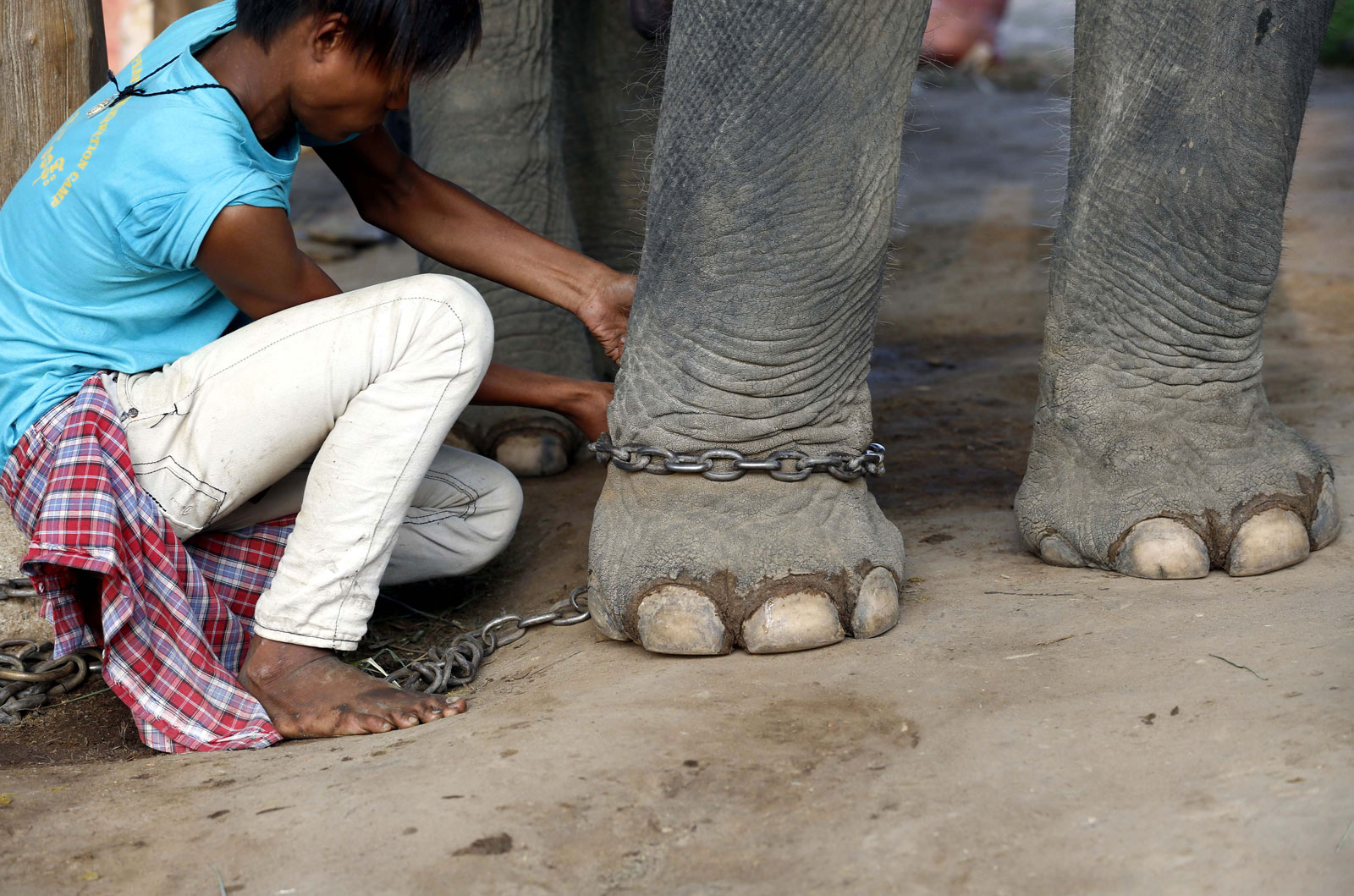
Life after logging
After their ban, Myanmar was keen to get a piece of the elephant tourism action. Responsibility for their care fell to the MTE, said Tint Lwin Thaung. But they were not prepared for a future in which elephants were no longer the workhorses of the forest.
“It seems that they don’t have a long-term plan,” he said. “But in the short term, they are looking to set up several elephant camps.”
Turner, a conservation biologist by training who worked for the Born Free Foundation to better the conditions for animals in captivity for 17 years, is worried about the welfare of Myanmar’s out-of-work elephants.
“I hear that there are about 6,000 captive elephants in Myanmar twiddling their trunks at the moment, kept in very large enclosures, like herds of cattle,” he said.
Data from the forestry departments puts the figure closer to 5,000, of which the MTE owns about 2,000. Up to 1,000 are in private hands, said Tint Lwin Aung, and “between 1,000 and 1,500 wild elephants still in the wild”. Accounting for the largest Asian elephant population in Southeast Asia, Myanmar’s elephants are important to the future survival of endangered species worldwide, with numbers plummeting by 90% over the past century to an estimated population of between 40,000 and 50,000 – of which one in ten are in Myanmar.
For Turner, that fragile future is now at risk.
“Not only could Myanmar use some of those elephants to make similar camps, but also, there is a great chance that a lot of those animals will be exported to countries where we would have a great worry,” he said. “China springs to mind.”
A new home for Myanmar’s elephants?
For now, Win Aung says, Myanmar’s elephants camps are scant and mostly makeshift, with camp owners putting their elephants within easy view – at the end of chains.
And while they are not induced to perform cheap tricks like painting and walking tightropes, Dane Waters, founder and president of the Elephant Project, their welfare was still a cause for concern.
“Though the Myanmar government is trying hard to find a home for the thousands of unemployed timber elephants, we believe that these camps are not the answer,” Waters told Southeast Asia Globe. “The primary problem with these camps, as is the case in Thailand… is that the elephants are being used for entertainment purposes, which we do not support.”
And more camps means more elephants – over double the number there were in 1989. “When the timber extraction finished, there were 2,000 animals,” Turner explained, “now we’re looking at 4,700 animals.”
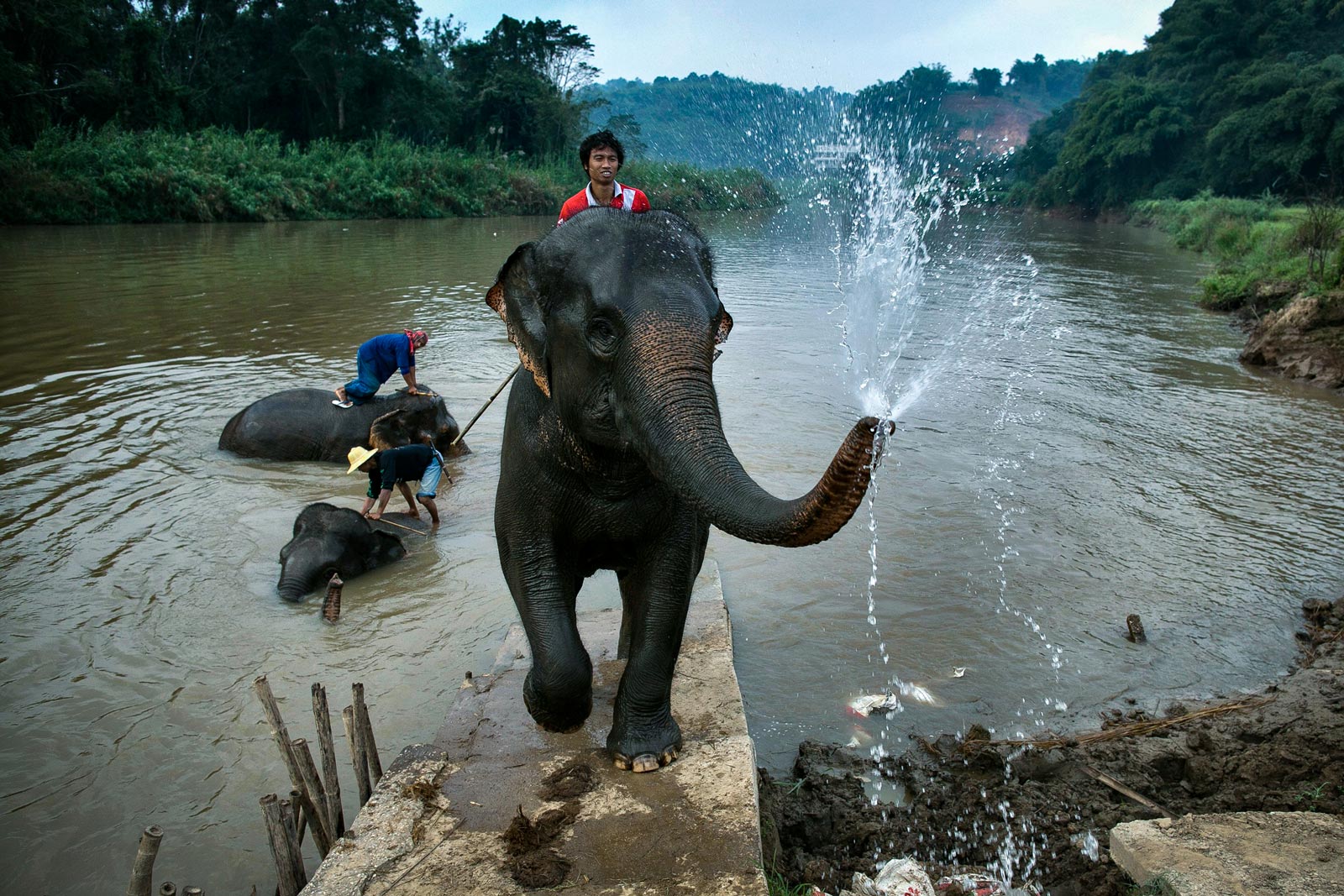
“Though the Myanmar government is trying hard to find a home for the thousands of unemployed timber elephants, we believe that these camps are not the answer,” the Elephant Project’s Dane Waters said.
But increases in the number of elephants over the last decade don’t quite add up. According to WAP data, in the six years between 2010 and 2016, the number of elephants in captivity in Thailand rose by close to a third.
According to Turner, though, elephants don’t breed well in captivity. So where did all the extra elephants come from? Sources point to Myanmar.
According to data from global wildlife trade monitoring network TRAFFIC, 60% of the elephants sold into the tourist industry in Thailand between April 2011 and March 2013 originated in Myanmar, adding up to almost 50 elephants – with actual figure likely a lot higher.
The capture of these wild elephants is “a serious threat to the future survival of [Myanmar’s] wild population of around 4,000–5,000 Asian Elephants,” the TRAFFIC report from 2014 stated. Today, the number is less than half that.
Asian elephants captive and wild are classified as endangered, making this cross-border trade illegal under the Convention on International Trade in Endangered Species or CITES.
Since the turn of the century, elephants may have been snatched from the wild in their hundreds – all, according to Turner, in the name of entertainment. “Those numbers have grown because of the travel industry,” he said. “Elephant camps were established for tourism – they have quadrupled in number over a period of 15 to 20 years.”
“If these animals cannot safely be released to the wild, they should be retired to reputable sanctuaries where their needs – and not human profit – are put first”
Delcianna Winders, former lawyer for PETA
So what’s the alternative?
Let them go free, said Win Aung.
“My thinking is that eventually, the captive elephants under the MTE or private sector, should be set free back into the nature, back to their habitat,” he said.
But as former director of nature and wildlife conservation division at Myanmar’s Forest department Win Naing Thaw points out, this is not as easy as it sounds. First, there’s the threat of poaching. Second – and harder to fix – is the grim fact that due to rampant land clearing, there isn’t much forest left.
Without carving out natural spaces for elephants to flourish, the animals will wander back within reach of human settlements, conditioned by years of close contact with their handlers.
Delcianna Winders, former lawyer for PETA, said that it was a tall order.
“If these animals cannot safely be released to the wild, “ she said, “they should be retired to reputable sanctuaries where their needs – and not human profit – are put first.”
But despite Western tourists historically bringing the bulk of the demand, said Turner, precious little is being done by the developed world to help change the business model its custom has created.
“Nothing is being done to help them modify their products, so they can still have a business,” he said.
Some camps have made changes – but not always the right ones.
“When you see camps that have removed riding are now offering elephant bathing… people are sitting on the backs of the elephants, while they’re washing them, or in some cases, walking over their backs,” Turner said. “I can’t see any difference between that and elephant riding, from a biologist’s perspective.”
Other camps have begun offering elephant experiences that put the creatures’ own needs first, such as observation-only “walking with elephant” packages that give pachyderms the power to decide how much interaction they wish to have with humans.
Ultimately, though, every elephant that crops up on Instagram feeds into the dangerous perception that these endangered beasts are, so to speak, out of the woods.
“Mounting evidence shows that when humans see other humans in unnatural, direct contact with imperiled animals, they are more likely to erroneously believe that populations are stable and healthy,” said Winders.


